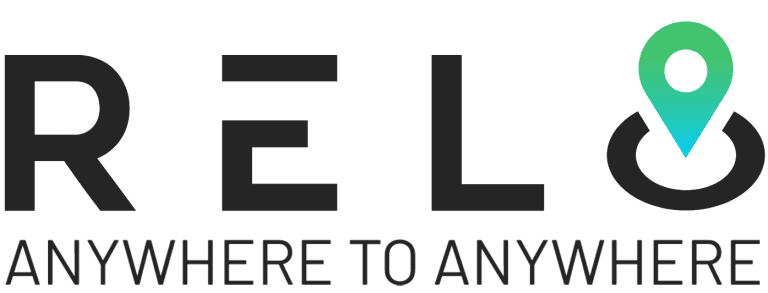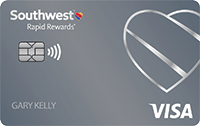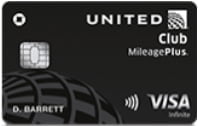Planning for retirement is essential for achieving financial security and a comfortable future. A range of retirement plans offered by employers makes it simpler for employees to save, each offering distinct benefits and tax advantages. For instance, 401(k) plans often match up to 5% of salary and offer tax advantages. They also offer investment options, reducing taxable income by $22,500 (2024 limit) plus $7,500 for those over 50.
Here are 12 popular plans that you should consider for a financially secure retirement.
1. 401(k) Plan
The most accessible form of a retirement plan is through the 401(k) plan, which allows employees to grow their savings with the added benefit of tax advantages. Employees may contribute a portion of their income pre-tax, lowering their taxable income and enabling this portion to grow without immediately entailing taxes. It can significantly increase total savings without additional cost to the employee.
Features –
- Tax-deferred growth on contributions.
- Employer match, often up to 5%.
- Traditional and Roth options for tax flexibility.
- The annual contribution limit is $22,500, plus $7,500 for those over 50.
- Wide range of investment choices.
Benefits –
- Boosts retirement savings with employer contributions.
- Flexibility for personalized tax planning.
- Potential for substantial growth through diverse investments.
?Related – What is a Retirement Nest Egg and How to Build One for the Future
2. 403(b) Plan
Public schools, non-profit organizations, and certain government entities specifically offer this plan, similar to a 401(k). These are those plans in which the contributions are, under this plan, paid pre-tax and grow tax-deferred. While the employer can offer matching for the contributions, it is less common within the non-profit sectors. It is one great avenue where employees might maximize their retirement savings.
Features –
- Available to public schools, non-profits, and government workers.
- Pre-tax contributions grow tax-deferred.
- Although potential employer matching is less standard, only 17% of non-profits offer a match.
Benefits –
- Provides tax-deferred growth, boosting long-term savings.
- Employer matching can increase contributions, with average match rates of around 3% for those who offer it.
- Ideal for public sector employees, with 403(b) contributions capped at $22,500 (2024 limit), plus a $7,500 catch-up for those over 50.
3. 457(b) Plan
Another tax-deferred retirement 457(b) plan allows employees to contribute a portion of their income. It is unique because it often allows for catch-up contributions over and above the annual limit in the final years before retirement, increasing savings. They are typically offered to government and certain non-profit employees, providing them with a valuable retirement savings tool.
Features –
- The tax-deferred plan is available to the government and some non-profit employees.
- Unique catch-up contributions are allowed in the final working years.
- The contribution limit is $22,500 (2024 limit) plus an additional $22,500 in catch-up contributions in the final three years before retirement.
Benefits –
- Flexible catch-up contributions can increase retirement funds significantly.
- Allows tax-deferred growth on contributions, minimizing taxable income.
- They enhance savings for employees with unique catch-up options.
4. SIMPLE IRA
Small businesses usually have fewer employees and develop a Savings Incentive Match Plan for Employees, commonly called a SIMPLE IRA. The employee and employer both pay into the SIMPLE IRA plan. An employer can contribute by either matching or making some non-elective contribution. Establishing and administering a SIMPLE IRA is relatively uncomplicated, which helps explain its popularity with smaller employers as an inexpensive method of building savings.
Features –
- Offered to small businesses with 100 or fewer employees.
- Employer contributions match or are non-elective, averaging 2–3% of employee salary.
- Simple to set up and manage, appealing to small businesses.
Benefits –
- Encourages saving with matching contributions; 95% of SIMPLE IRAs include employer contributions.
- A straightforward setup and lower fees make it accessible for smaller employers.
- It provides a tax-friendly retirement solution with annual contribution limits of $15,500 plus $3,500 for those 50 and older.
5. SEP IRA
The Simplified Employee Pension, more commonly called the SEP IRA, is another most-liked option for small businesses or self-employed individuals. With a SEP, the employers contribute on behalf of the employees but go directly into an IRA in each employee’s name. The SEP IRA is relatively easy to administer with flexible, tax-deductible contributions by the employer, making it relatively inexpensive.
Features –
- Suited for small businesses or self-employed individuals
- Employer-only contributions directly to employee IRAs, up to 25% of employee salary or $66,000 annually (2024 limit)
- Contributions are tax-deductible for employers
Benefits –
- Cost-effective option for small business owners, reducing taxable income by up to 25%.
- Flexible contribution levels based on business profitability.
- Easy administration makes it a popular choice among self-employed individuals.
?♀️ Also read – How to Create a Retirement Budget
6. Profit-Sharing Plan
A profit-sharing plan allocates employer profits to employees’ retirement accounts, boosting savings and aligning employee success with company growth. An employer could contribute a varying amount each year depending on how well the company did that year. Employees under 401(k) do not make any contribution. This plan encourages employees, as their savings grow with company success, to align their financial goals with performance.
Features –
- Employers contribute a portion of profits to employees’ retirement accounts.
- Contribution amounts vary yearly, with a 2024 maximum of $66,000 per employee.
- Employees don’t contribute, so it’s fully employer-funded.
Benefits –
- Motivates employees by tying contributions to company performance.
- It offers the potential for higher retirement savings during profitable years.
- Provides tax-deferred growth on employer contributions, boosting retirement savings.
7. Defined Benefit Pension Plan
The employees are given fixed retirement income based on their years of service, salary, and age. The employer fully funds this plan; once retired, this turn of income comes in very handy. Though these are rarer nowadays, many large organizations offer them, especially in government and unionized sectors. In a defined benefit plan, an assurance of payback is there. Long-term planning works best with this.
Features –
- It guarantees a stable retirement income for employees unaffected by market performance.
- They provide inflation-adjusted income options for added security.
- Lifetime income ensures financial stability, though fewer than 13% of private employers offer this today.
Benefits –
- Predictable retirement income for employees, often calculated as 2% of final salary per service year.
- It removes the burden of retirement funding from employees.
- Particularly attractive for employees in government or unionized sectors.
8. Cash Balance Plan
A cash balance plan has elements of both defined benefit and defined contribution plans. The employer credits the employee’s account with a fixed salary percentage plus interest in this plan. They can receive their account balance as a lump sum or opt for regular payments in annuity form for a steady income. Cash balance plans appeal to employers and employees who value predictable retirement benefits.
Features –
- They combine defined benefit and defined contribution elements.
- Employer credits a percentage of salary plus interest; typically, 5–7% of pay plus a set interest rate.
- It provides lump sum or annuity payout options.
Benefits –
- Predictable benefit with growth over time, regardless of market performance.
- Flexible withdrawal options at retirement.
- Suitable for employers and employees seeking a stable and predictable retirement benefit.
9. Employee Stock Ownership Plan (ESOP)
An Employee Stock Ownership Plan (ESOP) provides employees with shares in the company as part of their retirement benefits. The value of these shares grows over time, and employees can sell them upon retirement. Private companies offer ESOPs to align employee interests with company success, fostering loyalty and growth. Private companies use ESOPs to align employee interests and foster loyalty.
Features –
- It allocates company shares as part of retirement benefits.
- Shares grow with company value, with around 6,500 ESOPs currently in the U.S., employing over 14 million people.
- Often offered by private companies.
Benefits –
- Aligns employee interests with company success, fostering loyalty.
- It offers potential for financial growth tied to company performance.
- Provides a long-term investment tied to company equity that employees can sell at retirement.
10. Money Purchase Plan
A money purchase plan requires employers to contribute a fixed percentage of each employee’s salary to the plan each year. Unlike profit-sharing plans, a money purchase plan requires contributions, providing employees with a more predictable and secure retirement benefit. The employer’s consistent contribution requirement often leads to steady employee retirement savings growth.
Features –
- Fixed employer contributions, typically 5–10% of employee salary each year.
- Contributions are mandatory, unlike profit-sharing plans.
- 2024 maximum contribution limit of $66,000 per employee.
Benefits –
- Steady, predictable retirement savings for employees.
- Regular employer contributions regardless of profitability.
- Stable annual contributions make it a reliable retirement funding source.
Recommended read – What is a Normal Retirement Age?
11. Roth 401(k) Plan
A Roth 401(k) is, in a sense, the best of both worlds. It takes some attributes of a traditional 401(k) and a few advantages in taxation of a Roth IRA. Employees make after-tax-dollar contributions. They enable tax-free retirement distribution for employees who meet specific requirements. Many employers also offer an alternative to a Roth 401(k) and the traditional option of deciding which will best suit their financial situation.
Features –
- After-tax contributions with tax-free withdrawals in retirement.
- Employers now offer Roth 401(k)s alongside traditional 401(k)s; 86% of companies offer this option.
- 2024 contribution limit of $22,500 with an additional $7,500 for those 50 and older.
Benefits –
- Tax-free income in retirement is ideal for those expecting higher future tax rates.
- Flexibility to choose tax treatment based on current and expected future income.
- Allows higher income earners to benefit from tax-free growth and withdrawals.
12. Deferred Compensation Plan
A deferred compensation plan allows employees to hold on partially to their salary until later in life, usually retirement. Employers typically offer such a plan to high-income earners or executives. It allows them to set aside earnings without immediate tax. Still, they will have tax consequences at the withdrawal point, benefiting those falling within the highest tax bracket. Employers may also match the contributions, thereby increasing potential long-term retirement savings.
Features –
- Allows deferral of a portion of salary until retirement.
- Employers often aim these plans at high-income employees or executives.
- Contributions are not taxed until withdrawal, benefiting those in higher tax brackets.
Benefits –
- They reduce taxable income in high-earning years.
- It helps build retirement savings for those with substantial salaries.
- Enhances retirement savings with potential employer matches, adding to deferred income.
Maximize Your Employer-Sponsored Retirement Plan
Planning for retirement goes beyond just setting up an account; it involves making strategic decisions to maximize growth and security. By taking full advantage of employer-sponsored retirement plans, you can enhance your financial future and achieve greater peace of mind.
Here are some practical tips to help you –
- Get Full Employer Match – Contribute enough to secure the entire match.
- Optimize for Taxes – Choose between traditional and Roth based on your tax goals.
- Diversify Investments – Spread investments to manage risk and grow savings.
- Use Catch-Up if 50+ – Add more if eligible for catch-up contributions.
- Review Regularly – Adjust contributions and investments as needed.
- Boost Contributions Over Time – Increase your percentage as income grows to enhance savings.

Bring It All Together!
With these popular retirement plans offered by employers, they have various options to grow their savings. 401(k), 403(b), and SEP IRAs boast tax benefits, employer contributions, and investment options that diversely avail employees of these benefits. The choice depends upon an individual’s goals, financial needs, and the employer’s options. Employees can maximize savings by understanding these plans.
Make Informed Retirement and Relocation Decisions
Relo.AI can help simplify this decision-making process by selecting the best retirement plan tailored to your needs and providing seamless support for retirement relocation.
Let us assist in creating a smooth, secure transition for your retirement journey.
Set up a meeting to start planning your future.











